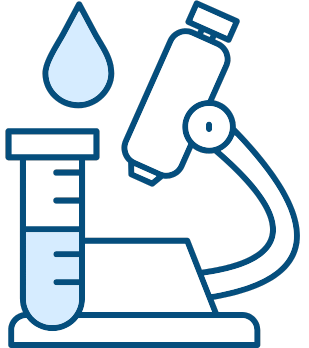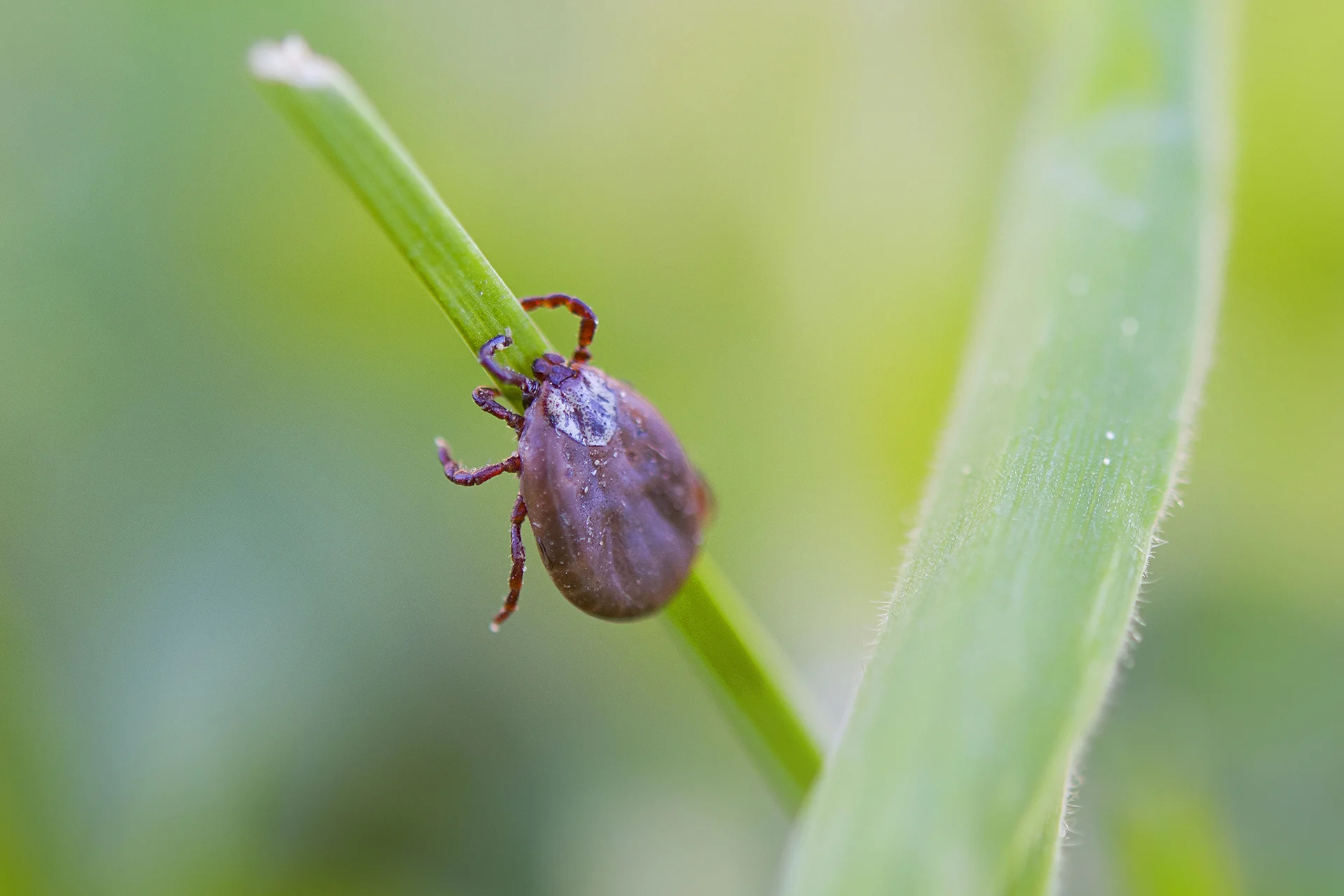When the weather warms up, we rush to enjoy it, rush to the parks, walk in the woods and generally enjoy nature. But when nature wakes up, so do the little creatures, the ticks, which pose a not-so-little threat to our health – tick-borne encephalitis. Tick-borne encephalitis is a serious and dangerous viral disease transmitted by mosquitoes or tick bites. It can cause serious inflammation of the central nervous system, leaving long-term residual effects or even death. How to recognise and treat tick-borne encephalitis? How can I protect myself from this threatening disease? In this article, together with Drops Clinic specialists, we will look at the main signs of tick-borne encephalitis, how to identify tick-borne encephalitis, which treatment methods to use and how to reduce the risk of contracting it.
Our ServiceHow dangerous is tick-borne encephalitis?
Tick-borne encephalitis is a viral infection, usually spread by mosquito or tick bites. The virus travels through the bloodstream and is therefore extremely dangerous because it can enter the brain and nervous system, where it causes inflammation and damage to nerve cells. Tick-borne encephalitis is dangerous because it can damage the meninges and the peripheral nervous system. The virus can mutate and adapt to different conditions and hosts.
Tick-borne encephalitis can be mild or severe. Mild tick-borne encephalitis usually presents with flu-like symptoms such as fever, headache, muscle pain and fatigue. Severe tick-borne encephalitis is characterised by intense and threatening symptoms. It can cause severe headaches, unconsciousness, convulsions, paralysis and sometimes death. The survival rate for tick-borne encephalitis is about 95%, but about 30% of patients who get it suffer long-term or even permanent nervous disorders, including headaches, memory loss or even epilepsy..
Symptoms of tick-borne encephalitis
Signs of tick-borne encephalitis appear after the incubation period. The incubation period lasts on average 7-14 days, but can be as long as 2-28 days. Up to 87% of cases occur in two waves. The first phase (wave) lasts on average 5 days and symptoms are often non-specific and may resemble colds, flu or other viral diseases. The primary symptoms of tick-borne encephalitis are usually:
- fever;
- general weakness;
- fatigue;
- head, bone and muscle pain;
- nausea;
- vomiting;
- sometimes a rash.
Non-specific symptoms usually last from a few days to a week and often resolve spontaneously.
The first wave is followed by an episode of apparent “improvement”. This can last from 1 to 33 days, but usually lasts 5-8 days. After this period, if the disease is not overcome, a second wave of the disease starts. This time the symptoms are more intense and specific. Specific symptoms usually follow non-specific symptoms and can be very severe or even life-threatening.
Specific symptoms are associated with inflammation of the brain and may include:
- severe headache, which may be constant or throbbing and worsen with movement or light;
- loss of consciousness, which may be transient or prolonged. Loss of consciousness may indicate brain damage or circulatory problems;
- seizures, which may occur all over the body or in specific areas of the body. Tick-borne encephalitis can also cause muscle spasms or tremors;
- paralysis, which may be on both or one side of the body. Paralysis is caused by damage to the nervous system or cerebral infarction caused by the disease;
- speech disorders, which may be manifested by difficulty in expressing words or complete loss of speech;
- visual disturbances, which may be related to the coordination of eye movements or the clarity of the image and may indicate inflammation of the nerves in the brain;
- fluctuations in body temperature;
- meningismus (stiff neck)
Diagnosis of tick-borne encephalitis
Diagnosing tick-borne encephalitis is difficult because symptoms can appear late and can be similar to those of other diseases. It is therefore important to seek medical attention if you suspect that you may be infected with the tick-borne encephalitis virus. The earlier the diagnosis is made, the sooner you can start treatment and reduce the risk of complications.
Testing for tick-borne encephalitis is based on the detection of tick-borne immunoglobulins M and G (IgM and IgG) in serum. IgM antibodies start to be produced from day 3-5 of the disease and can remain in the body for up to 2-3 months. IgG antibodies appear later, from day 7-10 of the illness, and can persist throughout life. History, clinical symptoms and laboratory tests are also important for the diagnosis of encephalitis.
Tests for erectile encephalitis
Blood and cerebrospinal fluid tests are used to detect encephalitis. Blood is more commonly used to detect the tick-borne encephalitis virus. Cerebrospinal fluid testing is complex and therefore rarely used. These tests should only be carried out in specialised laboratories and can take up to several days.
The blood test helps to identify the virus itself and the level of antibodies to the virus. A blood test can show a decrease in the number of white blood cells and platelets in the blood and an increase in liver enzymes during the first phase of the disease. A cerebrospinal fluid test can detect not only the virus itself, but also signs of inflammation in the brain. A cerebrospinal fluid test can also show a decrease in white blood cells and platelets, an increase in protein and normal or slightly elevated glucose levels, which are typical of the second phase of the disease.
Our ServiceTreatment of erectile encephalitis
The treatment of tick-borne encephalitis is symptomatic and specific. Symptomatic treatment uses measures that relieve symptoms and help the body fight the infection. These may include fever-reducing drugs, painkillers and maintaining fluid and electrolyte levels in the body. Specific treatments include antiviral drugs that can inhibit the replication of the tick-borne encephalitis virus. However, only a specialist can determine how to treat tick-borne encephalitis, and any treatment should only be administered on the doctor’s instructions. There is no specific antiviral drug for the tick-borne encephalitis virus.
The following are the most common treatments for tick-borne encephalitis in general:
- antipyretics;
- painkillers;
- drip therapy (fluid and electrolyte replenishment);
- antibiotics (if there is a bacterial infection);
- immunoglobulin (if there is a severe immune disorder);
- rehabilitation (if there is a nervous system disorder).
The duration of treatment for tick-borne encephalitis depends on the severity of the disease. Treatment of the disease can last from a few weeks to several months. Severe cases may require hospitalisation, intensive therapy or rehabilitation.
Complications of tick-borne encephalitis
Tick-borne encephalitis is a threatening disease because the virus affects the brain and nervous system. Erctile encephalitis can lead to serious and long-lasting complications that can affect a patient’s quality of life and persist for life.
The complications of erectile encephalitis can vary in severity and duration. The most common complications of tick-borne encephalitis are:
- headaches;
- memory loss;
- epilepsy;
- paralysis;
- speech disorders;
- visual impairment;
- hormone imbalances;
- death.
The adult mortality rate for tick-borne encephalitis is 0.5-2%, The incidence of long-term severe residual effects (paralysis, paresis, seizures, incoordination, balance disorders, etc.) is up to 8.5%. The incidence of moderate residual effects (headaches, attention, memory, sleep disorders, etc.) is around 20%.
How can I reduce my risk of tick-borne encephalitis?
How can I reduce my risk of tick-borne encephalitis? There are several ways you can protect yourself. Preventing tick-borne encephalitis is important because the disease can be very dangerous and there is no specific treatment. Follow these rules to avoid this threatening disease:
- Avoid places where mosquitoes and ticks are abundant – don’t walk in forests, meadows and parks without protective equipment;
- use mosquito and tick repellents – repellents – on your skin and clothing when walking in nature;
- Wear long clothes and high-heeled shoes;
- check your body for any ticks that have attached themselves when you return from the forest or park;
- if you experience symptoms and if the tick has been burrowing for more than 24 hours, seek medical attention immediately;
- get vaccinated.
Vaccination is the most effective way to prevent tick-borne encephalitis. It is therefore important to get vaccinated against tick-borne encephalitis every spring. Vaccination is available from the age of 1 year. The vaccination schedule consists of three doses: the first and second dose should be received within 1-3 months and the third dose should be received 9-12 months after the second dose. After that, the vaccine should be repeated every 3-5 years.Tick-borne encephalitis is a serious viral disease caused by mosquito or tick bites. It affects the brain and nervous system and can cause inflammation of the brain or long-term health problems. It is therefore important to diagnose it in time and take treatment. Tick-borne encephalitis can cause a variety of symptoms. The disease first manifests itself in symptoms similar to flu or other viral diseases, such as fever, head and muscle pain and general weakness. There are no specific drugs to treat tick-borne encephalitis, so symptomatic treatment is the most common. There are several ways to protect yourself from the disease – avoiding tick habitats, using repellents, wearing long clothes. However, the best way to prevent the disease is through vaccination. If you experience symptoms similar to tick-borne encephalitis, contact the Drops Clinic family clinic specialists who will give you a consultation, order the necessary blood tests and prescribe the right treatment. Take care and stay healthy!




